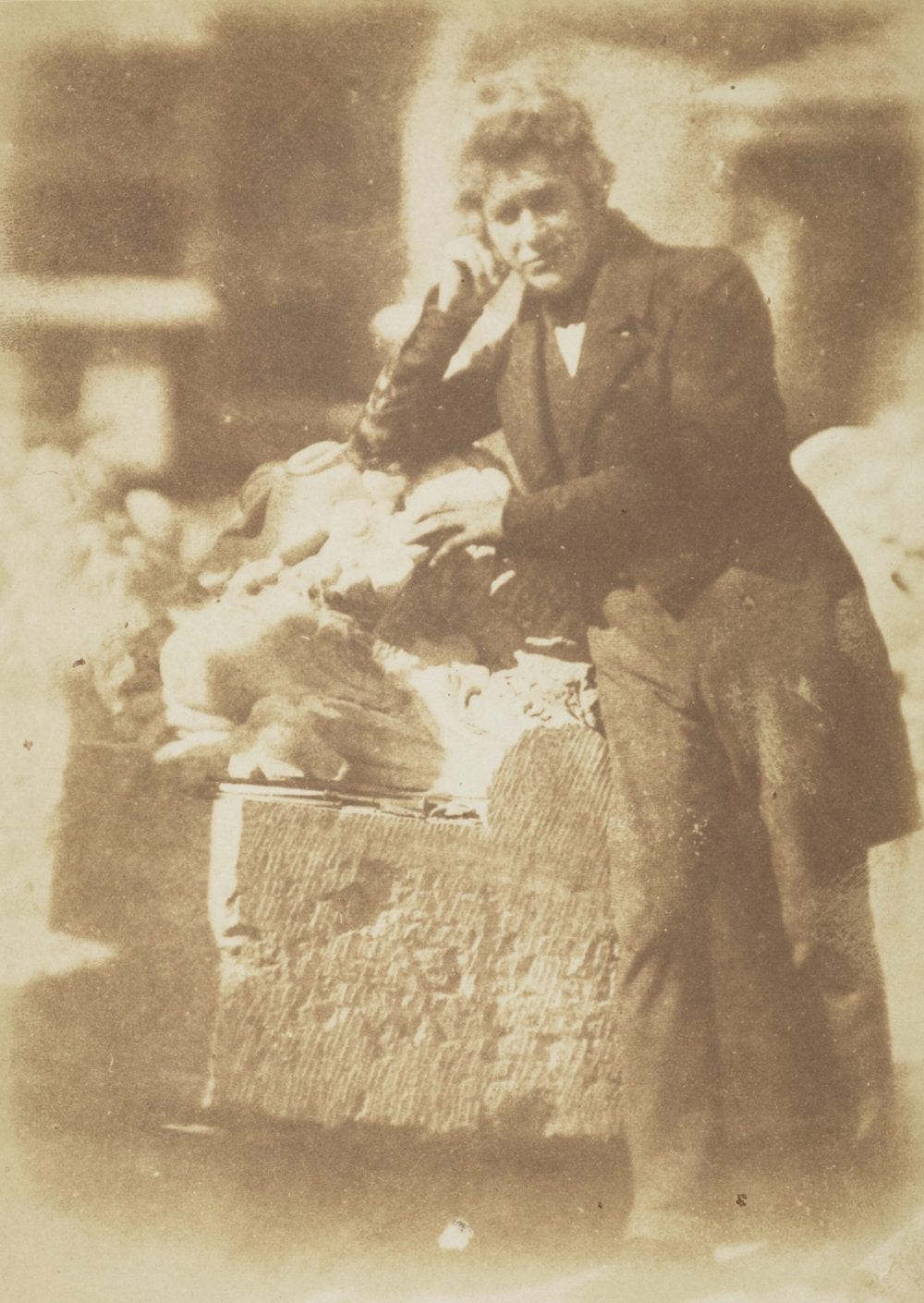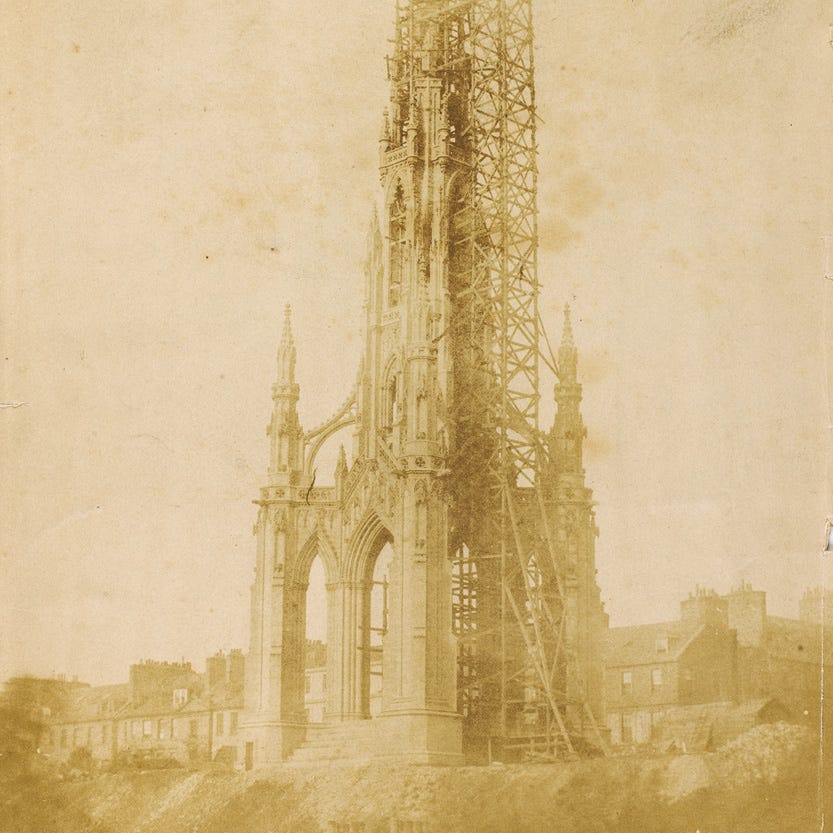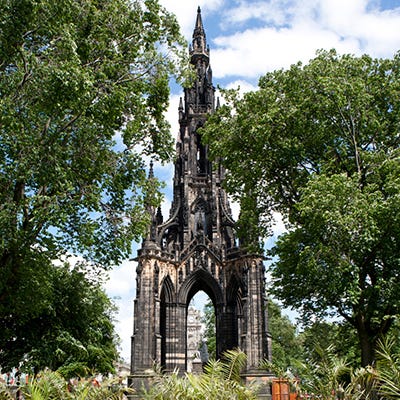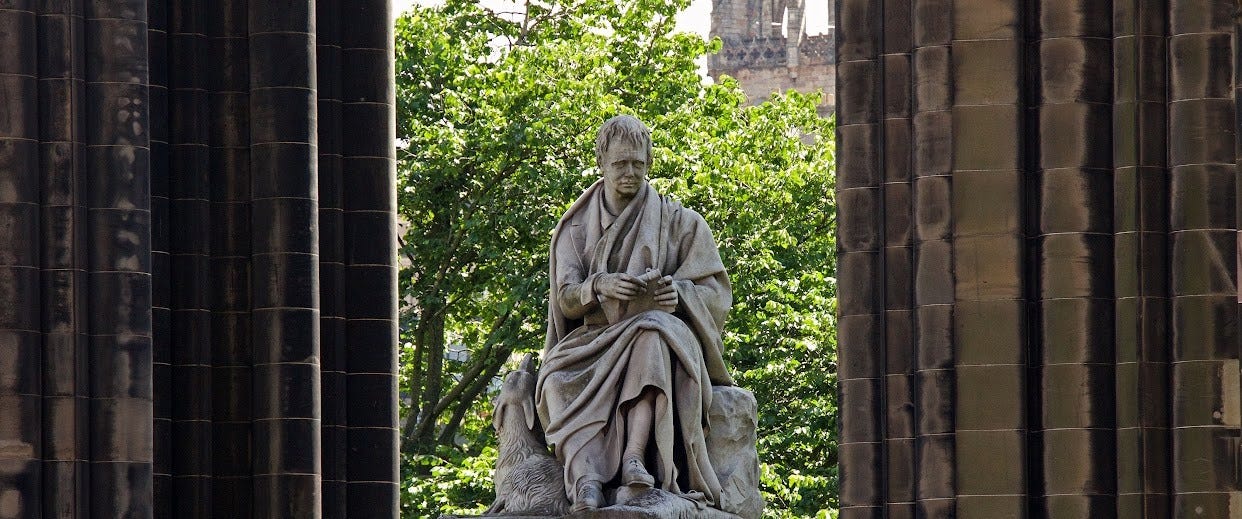‘Failure’ or ‘finest on earth’? The Scott Monument story is worthy of a novel
The tragic tale of the creator of one of Edinburgh's most famous landmarks
The leaves were turning to red and gold in the gardens of Princes Street in the autumn of 1844 as the great and the good of Edinburgh gathered for the ceremony. Young Thomas Meikle Kemp had been asked to oversee the laying of the final stone in the new monument to Scotland’s most famous writer - completing his father’s vision.
His mother, Elizabeth, was still wearing widow’s black. The 10-year-old boy’s participation in the ceremony demonstrated the respect of the city for his father’s role in creating the great gothic spire that now rose from the heart of the Capital. The youngster fought back tears, as his thoughts turned to just a few months previously…
It was the 6th of the month, a Wednesday, and it was a typical March night. Cloudy, a touch of fog, still a chill in the air. The night was inky black, dark as velvet, as George Meikle Kemp took his leave of David Lind. The two men had spoken of progress on their construction. Building a monument to immortalise Scotland’s great writer, Sir Walter Scott, had not been without difficulty but its completion was finally in sight.
The two men would be glad to see it done. Crafting Kemp’s gothic tower, a stunning vision in ornately carved stone, had been challenging even for masons as skilled as those who worked for Lind.
The two men shook hands as they parted at the door of Lind’s home near the Lochrin distillery at Tollcross, close to the Union Canal. Lind would never see his friend alive again.
News that shocked the city
At home, Elizabeth was fretting. It was late, and her husband and the father of their four sleeping bairns was rarely out at this hour. In the early morning, she could wait no longer. The alarm was raised, and a search organised.
The disappearance of George Meikle Kemp was quickly linked to his route home along the canal. Kemp intended to complete his walk home to Morningside via Fountainbridge, along the side of the canal.
Fears were expressed that he may have fallen into the water, or – worse – been attacked, robbed and thrown in. How he came to perish will remain uncertain, but what we do know is that his body was found in the water on 18 March – almost two weeks after he had bid good night to Lind.
The news of his death shocked the city. Thomas Bonnar, his father-in-law and a well-known architect and interior designer, wrote a “biographical sketch” of Kemp, and in it said: “The whole city, that had now learned to appreciate his excellence, bewailed the mournful event as a public calamity.”
It was initially considered to inter Kemp’s body in a vault below the magnificent monument he had created, but it was decided that he should be buried at the churchyard at St Cuthbert’s Church in Princes Street Gardens instead, facing his great creation. It is said that 400 officials and locals lined the funeral route. Workmen who had laboured in the creation of the monument carried his coffin from his home to the church.
Bonnar reported: “Every street through which the funeral passed was crowded with spectators. Such was the end of this promising architect, when his first great work, now nearly completed, surpassed the latest and best of those of his contemporaries.”
His gravestone included a medallion portrait carved by his friend, the renowned sculptor Alexander Handyside Ritchie.
And yet, as well as a mysterious and tragic end, the tale of the creation of one of Edinburgh’s most famous landmarks, and more particularly the man behind it, had an extraordinary beginning.
He was no high-born scion of a wealthy or even a professional family, but the son of a simple shepherd who worked on the hills near Biggar. A visit to the beautifully carved interior of Roslin Chapel, when he was still a young boy, made such an impression that it inspired him to look to the creation of buildings.
He first came to Edinburgh in the early part of the 19th century, and remained there until 1824, working as a joiner and millwright. He travelled to England and France studying their architecture before returning to his native land in 1827, and secured work through his hard-won skill in architectural drawings and models for the well-known architect William Burn.
Kemp’s great chance…
He was popular, talented and intelligent. According to Bonnar: “Kemp was an ardent admirer of our older poets. Chaucer, Sir David Lindsay, and Drummond, were his favourites; Burns he could almost repeat by heart; and he wrote occasional verses himself. Nor did he entirely neglect his musical powers. He was fond of the violin and could bring out his favourite Scotch airs on that instrument with taste and feeling. Kemp, therefore, while following his humble calling, was recognized by his immediate friends as a man of genius.”
His chance to demonstrate his great gift and passion for architecture came following the death of Sir Walter Scott in 1832, another writer whose work he admired. A clamour to create a monument to the great writer gathered pace, and fund-raising was successful. In the spring of 1836, a competition was announced to design a monument to Scott, and entries from around the world were anticipated.
Kemp, fearing his lack of architectural qualifications might disbar him, entered under the pseudonym of John Morvo – Morvo was the medieval architectural figure responsible for the intricate stonework in Scotland’s Border abbeys, particularly Melrose. As Bonnar recounted: “But what chance was there that an aproned, hard-handed mechanic would be intrusted (sic) with such a commission, especially when so many learned Vitruvios were in the field?”
Hard-handed or not, from more than 50 entries he made the final three, alongside two more eminent architects from England, and eventually after entering a second round (now under his own name) his great gothic design was to win out. The foundation stone was laid in the summer of 1840.
Stone was “hewn” by masons and then carved, from hard stone taken from the Binnie quarry to the west of the city. This work was done in sheds and gave out great clouds of fine dust. It is reported that 23 of the “hewing” masons were to die of silicosis, a heavy price.
The great tower of a little more than 200 feet took shape, with its architect onsite and overseeing every aspect of the work. Its ornate carving, its 68 beautiful sculptures depicting scenes from Scott’s work were created by some of Scotland’s finest sculptors, only 64 of them visible to visitors, and the great spiral staircases rose to a full 287 steps. At its base sat the magnificent Italian marble statue carved by Sir John Steell, depicting Scott and his beloved dog Maida.
Throughout the construction, Kemp was in constant attendance, working as hard as the men, and often accompanied by his oldest son, Thomas.
Opinions varied, inevitably, as the great monument – the second largest ever built to a writer – took shape. Charles Dickens, despite his love of Edinburgh and appreciation of Scott, was not a fan, and said, “I am sorry to report the Scott Monument is a failure. It is like the spire of a Gothic church taken off and stuck in the ground.”
However the 19th century historian and author Professor David Masson, himself the son of a stone cutter, took a different view. He said of the monument that it was “the finest…which has been raised anywhere on earth to the memory of a man of letters.”
Kemp became a well-known and celebrated figure in the city, so when his death came it hit hard. He died intestate, leaving assets of around £203 (around £20,000 in today’s money).
A memorial concert was organised to support his family by a group of prominent citizens, and was held on May 21, 1844, featuring some of Scotland’s best musicians. Funds were raised, but nonetheless it was insufficient to meet all of the family’s ongoing needs and Elizabeth had to take in work as a seamstress.
More family tragedy
There is one further, sad footnote to our tale.
Thomas Kemp, the son who laid the final stone to honour his father’s creation, followed in his father’s footsteps and embarked on a career as an architect. He served a seven year apprenticeship under David Cousin, a noted town planner and landscape architect who designed many city cemeteries, and notably East Princes Street Gardens. He also designed many churches and other buildings throughout Scotland.
Young Kemp showed great talent, winning a prestigious prize and a bursary from the Royal Scottish Academy. A brilliant career lay before him. Fate was to intervene cruelly. He died in 1853, aged just 21. His health had been poor, his illness probably due in no small part to the fine dust he had inhaled as a child.
Newspapers at the time noted his passing: “He was an amiable youth, of singular promise, with an hereditary genius for architectural design…
“Several gentlemen interested in the father have shown great kindness and attention to the son during his protracted illness.”
“Tears are the softening showers which cause the seed of heaven to spring up in the human heart. The will to do, the soul to dare.” - The Lady of the Lake by Sir Walter Scott.






